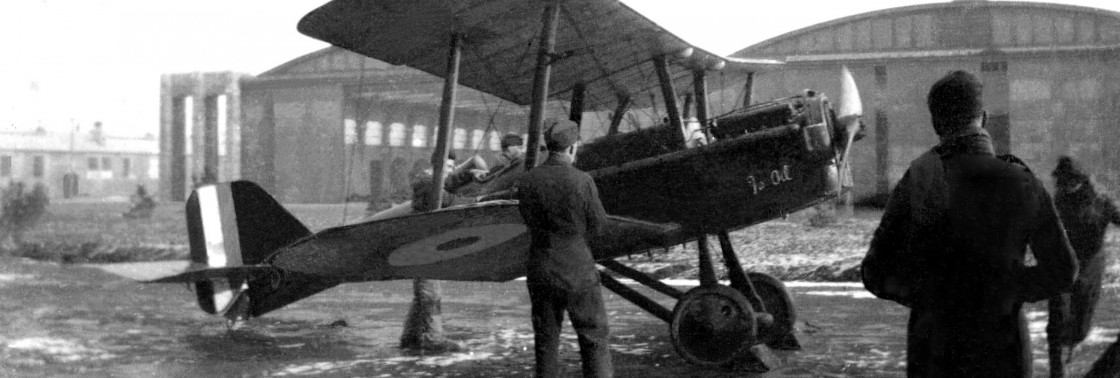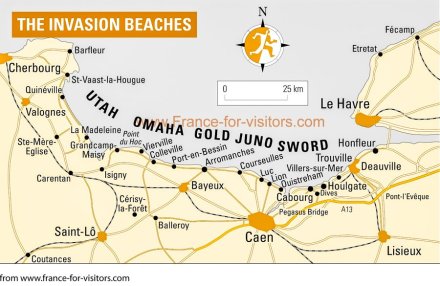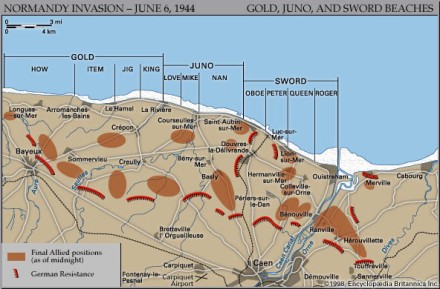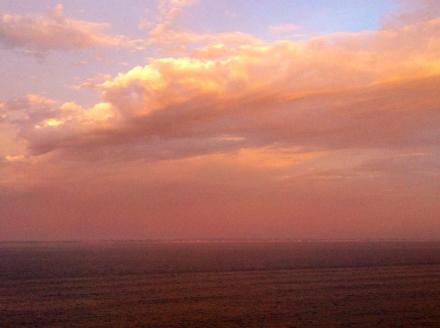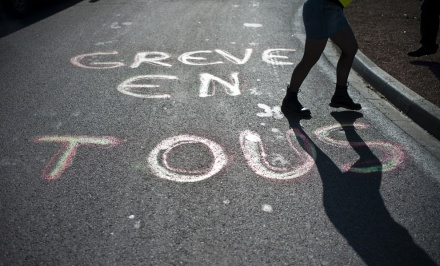After a short detour inland on the highway towards Cherbourg, one arrives in the real Band of Brothers country.
Heading back out towards the coast, the first stop is Ste Mère Eglise. This picturesque little town, sitting roughly 10km behind the coastline, was undoubtedly going to see enemy reinforcements piling through once the landings became apparent – which meant that airborne infantry units were parachuted in during the hours before the sea invasion to head off any such threat.
Mixed units of the U.S. 82nd Airborne and 101st Airborne Divisions were dropped shortly before 02:00 on June 6th – including the real-life Lt. Dick Winters and Easy Company. Due to an earlier aerial attack fires in the town illuminated the parachutists, resulting in enormous casualties among those directly overhead. Among these men, however, was Private John Steele of the 505th Parachute Infantry Regiment, whose story would be immortalised in the movie The Longest Day.

Private Steele is a permanent presence watching over visitors to Ste Mère Eglise
Steele escaped the bullets only for his parachute to become ensnared on the church steeple. Steele was wounded and played dead until he was rescued and captured by German troops – although he subsequently escaped and joined forces with the other airborne troops who successfully captured the village. Today a waxwork of Private Steele hangs from the Steeple in perpetuity – a major draw for visiting tourists, who were also being treated to a 1940s dancing display and re-enactment event when the S&G visited.

More re-enactors camped out at Ste Mère Eglise

American hardware was much in evidence throughout Normandy for the 70th anniversary commemorations
Heading back out towards the coast, Utah Beach is seen after driving down a road littered with memorials to the Allied forces, including the Danish seamen as well as markers for every state of the USA at 1km intervals. Once again it was time for a commemorative event when the S&G arrived, bringing with it crowds of French families and, in anticipation of a VIP arrival, many gendarmes too.

The US Navy is featured heavily in the memorials at Utah Beach – and among the artefacts on show

One of the plethora of Sherman tanks to be found in Normandy – outside the Utah Beach museum
Visiting the beach at low tide reveals just what an epic slog it must have been to the heavily burdened G.I.s coming ashore in the murderous fire depicted in that unforgettable opening sequence of Saving Private Ryan. It was far and away the most ground that must have been covered and in the most exposed stretch of the beachhead – one of the most unforgiving battlegrounds that could have been imagined.

The vast sweep of Utah Beach is one of the most sobering sights when touring Normandy

Obstacles from the beach intended to delay invading Allied troops in the field of fire

Former defensive fortification now part of the Utah Beach memorials
And, with that, a whistle-stop tour of the Normandy beaches was concluded. There is much more to be seen and much more to report on, but for now it is to be hoped that the rest of the commemorations on all sides pass off successfully and that these site and sights continue to be visited for many generations to come.
